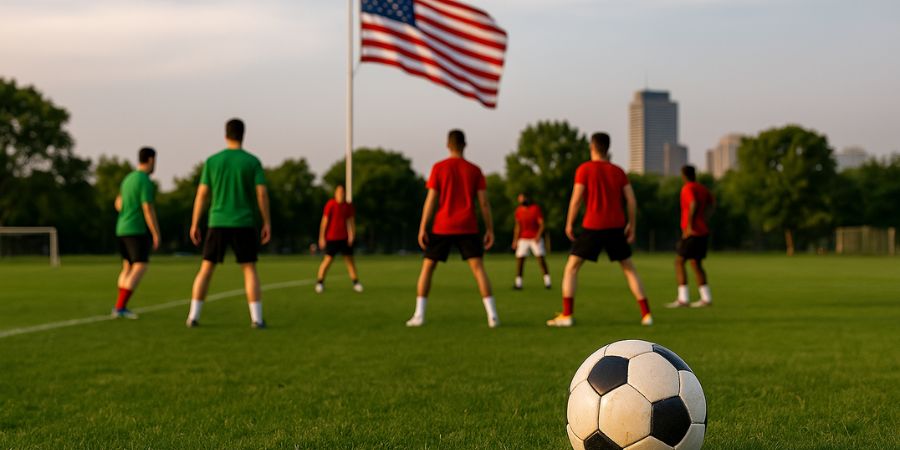Soccer, also known as football in many parts of the world, has grown massively in popularity across the United States over the past decade. With increasing interest at all levels—from kids and teens to adults and even senior players—more people are searching for ways to play organized soccer locally. Whether you’re a beginner looking for recreational fun or an experienced player wanting competitive action, this article will walk you through the process of joining a local soccer league in the USA.
In this guide, you’ll learn exactly how to find, register, and participate in local soccer leagues regardless of your age, location, or skill level.
Types of Soccer Leagues in the USA
Before you register for a league, it’s important to understand the different types of soccer leagues available in the country. These leagues are typically organized by age, skill level, and competitiveness.
1. Youth Soccer Leagues
Youth leagues are open to players under the age of 18 and are usually managed by schools, soccer academies, nonprofit organizations, or community sports clubs. Major organizations include:
-
AYSO (American Youth Soccer Organization)
-
US Youth Soccer
-
State-based youth programs
These leagues are structured by age groups and often follow seasonal formats.
2. Adult Recreational Leagues
Adult recreational leagues are ideal for players aged 18 and above who want to play for fun, fitness, or social interaction. These leagues are often offered by local parks and recreation departments, YMCA centers, or independent soccer clubs.
Games are usually played on evenings or weekends to accommodate working adults, and skill levels vary from beginner to advanced.
3. Competitive Amateur Leagues
These leagues are for more skilled or semi-professional players. You may need to attend tryouts, and some leagues are affiliated with regional or national bodies like the United States Adult Soccer Association (USASA).
Players in these leagues often take the game seriously, and teams may travel for tournaments or play in organized divisions with promotion and relegation systems.
4. Age-Based Leagues (Over-30, Over-40)
For older players who want to stay active without the intensity of younger competitive leagues, many local organizations offer age-based divisions such as Over-30, Over-40, or even Over-50 leagues. These leagues emphasize enjoyment, fitness, and community.
Where to Find Local Soccer Leagues Near You
There are several reliable ways to find local soccer leagues no matter where you live in the United States.
1. Google Search
One of the quickest ways is to search using terms like:
-
“adult soccer leagues near me”
-
“recreational soccer league [city name]”
-
“join youth soccer club in [state]”
Google often displays local leagues, websites, or maps of nearby sports fields with current programs.
2. Local Government & Parks Departments
Most city and county governments have a parks and recreation department that organizes sports leagues, including soccer. Visit your city’s official website and check for seasonal sports schedules. Many of these leagues are affordable and community-based.
3. National Soccer Directories
Websites like the United States Adult Soccer Association (USASA.org), Playpass.com, and LeagueApps.com allow you to search for affiliated leagues by region, age group, and skill level.
These directories can help you find everything from weekend co-ed leagues to elite amateur teams.
4. Social Media and Meetup Platforms
Facebook Groups, Reddit communities, and Meetup.com are useful for finding informal soccer groups or “pick-up” leagues where you can connect with local players. Many of these groups evolve into full teams that join leagues together.
How to Register for a Soccer League
Once you find a league or club you’re interested in, follow these general steps to get registered:
-
Visit the league’s official website or contact the organizer.
-
Look for open registration dates or upcoming season details.
-
Choose your age bracket or skill division.
-
Fill out the registration form (online or offline).
-
Pay the registration fee (usually between $50 and $200 depending on the league and location).
-
Sign any required waivers, insurance forms, or medical clearances.
If you don’t have a team, many leagues allow “free agents” to sign up and place them with other solo players.
What Gear Do You Need to Play in a Local Soccer League?
Most leagues will require basic soccer gear. Here’s a checklist:
-
Soccer cleats (firm ground or turf depending on the surface)
-
Shin guards
-
Soccer socks and shorts
-
Team jersey or practice shirt (provided by some leagues)
-
Water bottle
-
Optional: goalkeeper gloves (if you play as a goalie), personal soccer ball for warmups
It’s also recommended to bring your ID and registration confirmation during the first match.
What to Expect on Game Day
For first-time players, your first match might seem intimidating, but don’t worry. Most recreational leagues are beginner-friendly and focus on team spirit and enjoyment.
Here’s what a typical match day looks like:
-
Arrive 20–30 minutes before kick-off for warm-ups and team check-in.
-
Games usually last between 60 and 90 minutes depending on the league.
-
Standard 11-a-side and smaller 7-a-side or 5-a-side formats are common.
-
Substitutions are usually unlimited in recreational leagues.
-
Referees and basic rules are enforced, but casual leagues are lenient for beginners.
Players are encouraged to communicate with teammates, respect the officials, and play safely.
Can You Switch Teams or Leagues Later?
Yes, in most cases you can switch teams or move to a different league or division once the season ends. Some leagues allow mid-season transfers depending on availability and team approval.
If your skill level improves, you may want to transition from a recreational to a competitive team or try out for a more serious league.
Special Soccer Programs and Opportunities
Many cities offer unique formats or niche soccer opportunities, such as:
-
Women-only soccer leagues
-
LGBTQ+ inclusive soccer leagues
-
Adaptive soccer for players with disabilities
-
Small-sided leagues like futsal or indoor soccer
-
Family leagues where parents and kids play together
Exploring these options can help you find the right fit for your interests and lifestyle.
Benefits of Joining a Local Soccer League
Playing in a local league is not just about the sport. The benefits include:
-
Improved physical health and cardiovascular fitness
-
Mental wellness through stress reduction and focus
-
Building social connections and friendships
-
Enhancing communication and leadership skills
-
Enjoyment and structured recreation on a weekly basis
Soccer is one of the most inclusive and accessible sports in the world, and local leagues in the U.S. are making it easier than ever to get involved.
Conclusion
Joining a local soccer league in the USA is a rewarding and straightforward process that anyone can do—regardless of age, skill level, or background. From searching for leagues to preparing for your first game, all it takes is a little effort and a love for the game.
So whether you’re dreaming of the World Cup or just want to kick the ball around with friends on weekends, now is the time to sign up and be part of the growing soccer community in America.




